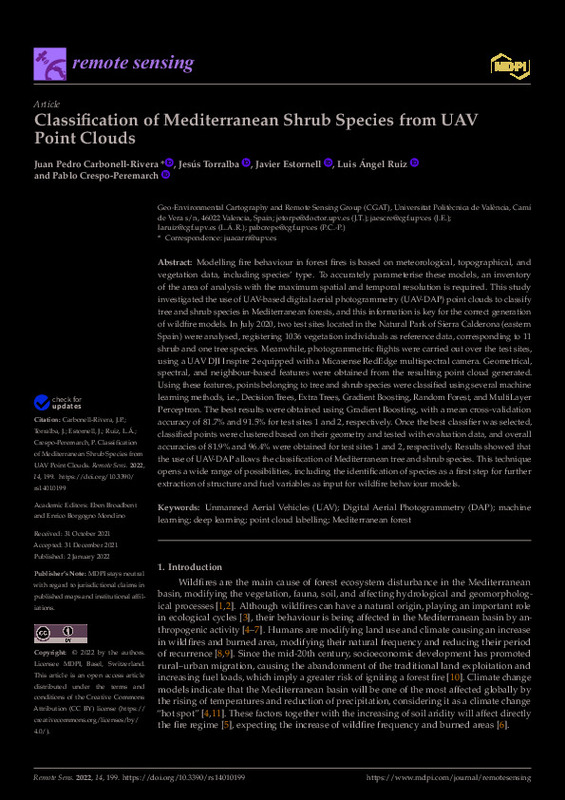JavaScript is disabled for your browser. Some features of this site may not work without it.
Buscar en RiuNet
Listar
Mi cuenta
Estadísticas
Ayuda RiuNet
Admin. UPV
Classification of Mediterranean Shrub Species from UAV Point Clouds
Mostrar el registro completo del ítem
Carbonell-Rivera, JP.; Torralba, J.; Estornell Cremades, J.; Ruiz Fernández, LÁ.; Crespo-Peremarch, P. (2022). Classification of Mediterranean Shrub Species from UAV Point Clouds. Remote Sensing. 14(1):1-22. https://doi.org/10.3390/rs14010199
Por favor, use este identificador para citar o enlazar este ítem: http://hdl.handle.net/10251/193327
Ficheros en el ítem
Metadatos del ítem
| Título: | Classification of Mediterranean Shrub Species from UAV Point Clouds | |
| Autor: | ||
| Entidad UPV: |
|
|
| Fecha difusión: |
|
|
| Resumen: |
[EN] Modelling fire behaviour in forest fires is based on meteorological, topographical, and vegetation data, including species¿ type. To accurately parameterise these models, an inventory of the area of analysis with the ...[+]
|
|
| Palabras clave: |
|
|
| Derechos de uso: | Reconocimiento (by) | |
| Fuente: |
|
|
| DOI: |
|
|
| Editorial: |
|
|
| Versión del editor: | https://doi.org/10.3390/rs14010199 | |
| Código del Proyecto: |
|
|
| Agradecimientos: |
|
|
| Tipo: |
|









